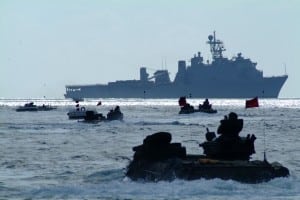
As it nears a decision to purchase a new amphibious combat vehicle, the Marine Corps has not given up hope of procuring a personnel carrier that can speed over water as part of a modernization effort that would bring the service in line with sister services in establishing a multi-domain combat presence. “I just came back from Japan where I met with engineers from Mitsubishi Heavy Industries on a vehicle that they are looking at – it kind of takes…

 By
By 











